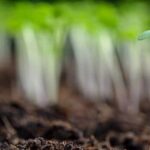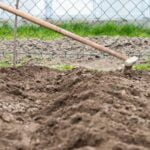Are you looking to start your very own vegetable garden, but lack the outdoor space for a traditional plot? Look no further. In this article, we will explore the world of creative containers for vegetable gardening. From traditional pots to innovative recycled materials, we will discuss the benefits of container gardening and provide essential tips for success.
Container gardening offers a multitude of benefits for those with limited space or poor soil conditions. Not only does it allow individuals in urban areas to grow their own produce, but it also provides flexibility in terms of placement and mobility. Whether you live in an apartment with a small balcony or have a limited backyard space, container gardening allows you to cultivate fresh vegetables without a traditional garden bed.
In addition to discussing the advantages of container gardening, this article will delve into choosing the right containers based on size, material, and drainage needs. We will explore innovative ideas for creating unique and eye-catching containers using both traditional pots and upcycled materials. So if you’re interested in cultivating your own vegetables in a limited space while expressing your creativity, keep reading.
Choosing the Right Containers
When it comes to choosing the right containers for your vegetable gardening, there are a few key factors to consider. The size of your container is crucial as it will directly impact the growth and development of your vegetables. Larger containers are best for vegetables with deep root systems like tomatoes and peppers, while smaller containers can be suitable for herbs and leafy greens.
Additionally, the material of the container is important for its durability and ability to retain moisture. Plastic, ceramic, and wood are popular choices, each with their own pros and cons. Drainage is also essential to prevent waterlogged soil, so be sure to select containers with adequate holes at the bottom.
Innovative container ideas can offer a unique and visually appealing twist to your vegetable garden. From traditional pots to recycled materials, there are endless possibilities for creative containers for vegetable gardening. Consider using old wine barrels, wooden crates, or even repurposed pallets as unconventional yet functional planters. Not only does this add an element of creativity to your garden, but it also promotes sustainability by reusing materials that would otherwise go to waste.
When deciding on soil and plant selection for your containers, it’s important to choose the best vegetables suited for container gardening. Some popular choices include cherry tomatoes, lettuce, radishes, and bell peppers. These vegetables thrive in confined spaces and can yield bountiful harvests when properly cared for in their designated containers.
| Container Type | Advantages |
|---|---|
| Recycled Materials | Promotes sustainability |
| Traditional Pots | Durable and widely available |
| Hanging Containers | Utilizes vertical space |
Innovative Container Ideas
When it comes to vegetable gardening, the options for creative containers are endless. Gone are the days when traditional pots were the only option for planting a container garden. Today, gardeners can choose from a wide variety of innovative containers, from repurposed items to specially designed planters. Here are some creative ideas for containers that will not only add visual interest to your garden but also promote sustainability through recycling.
- Traditional pots: Clay or ceramic pots are classic choices for container gardening. They come in various sizes and designs, making them versatile for different types of vegetables. These pots provide good drainage and airflow for the plants, helping to prevent overwatering and root rot.
- DIY planters: Get creative and make your own planters using recycled materials such as old wooden crates, buckets, or even tires. Not only does this reduce waste, but it also adds a unique touch to your garden. Just be sure to drill holes in the bottom for proper drainage before planting.
- Hanging baskets: Utilize vertical space by hanging baskets filled with soil and vegetables like cherry tomatoes, peppers, or herbs. This is a great option for small outdoor spaces or balconies.
With these innovative container ideas, you can add personality and charm to your vegetable gardening while promoting environmentally friendly practices. By thinking outside the traditional pot, you can create a visually stunning and bountiful container garden that showcases your creativity while providing delicious homegrown produce.
Soil and Plant Selection
When it comes to container gardening, the right soil and plant selection can make all the difference in the success of your vegetable garden. The type of soil used in containers should be well-drained and nutrient-rich to ensure optimum growth for your vegetables. Choosing the best vegetables for container gardening is also crucial as some plants are better suited for confined spaces than others.
To start off, let’s take a look at some of the best vegetables for container gardening:
- Tomatoes: Perfect for larger containers with plenty of sunlight.
- Peppers: Ideal for smaller to medium-sized containers and thrive in warm, sunny conditions.
- Lettuce: Great for shallow containers and can be grown in partial shade.
- Cucumbers: Best suited for larger containers with trellises for support.
In addition to choosing the right vegetables, selecting the appropriate soil mix is essential. Consider using a high-quality potting mix specifically designed for container gardening. This type of soil provides good drainage and aeration, which is crucial for the health of your plants. It also typically contains added nutrients to support plant growth.
Once you have chosen your vegetables and prepared the right soil mix, it’s time to plant them in your creative containers for vegetable gardening. Whether you are using traditional pots or repurposing unconventional items such as old barrels or crates, ensuring that there is adequate space and proper drainage will help set your container garden up for success.
With these key considerations in mind, you can create a thriving vegetable garden in even the smallest of spaces using creative containers that reflect your personal style. By selecting the best vegetables and providing them with suitable soil, you are well on your way to enjoying a bountiful harvest from your very own container garden.
Tips for Success
When it comes to successful container gardening, proper watering, fertilizing, and sunlight are crucial factors for the health and productivity of your vegetable plants. Without these elements, your plants may not thrive as expected. Here are some essential tips for ensuring success in these areas.
First and foremost, it’s important to choose the right soil mix for your containers. A high-quality potting mix that is well-draining but still retains moisture is essential for healthy plant growth. Be sure to use a mix specifically formulated for vegetables, as they have different nutrient requirements compared to other types of plants.
Watering is another critical aspect of container gardening. Unlike in-ground gardens, containers can dry out quickly, especially during hot weather. It’s important to water your vegetable plants regularly and consistently, aiming to keep the soil evenly moist but not waterlogged. This may mean watering once or even twice a day during peak summer months.
Fertilizing is also key to the success of your vegetable container garden. Since the plant roots are confined to a small space, they rely heavily on the nutrients available in the soil. Using a balanced fertilizer designed for vegetables will help provide your plants with the essential nutrients they need to thrive and produce an abundant harvest.
| Aspect | Tips |
|---|---|
| Soil Mix | Choose a well-draining potting mix formulated for vegetables |
| Watering | Water regularly to keep soil evenly moist but not waterlogged |
| Fertilizing | Use a balanced fertilizer designed for vegetables to provide essential nutrients |
Vertical Gardening
Benefits of Vertical Gardening
Vertical gardening is an innovative way to make the most of limited space while also adding visual interest to your vegetable garden. By utilizing hanging containers and trellises, you can create a lush green wall or tiered garden that not only looks beautiful but also maximizes your growing area. Vertical gardening can also help with better air circulation and sunlight exposure for your plants, leading to healthier growth and higher yields.
Creative Containers for Vertical Gardening
When it comes to vertical gardening, the choice of containers is crucial. Hanging baskets, wall-mounted planters, fabric pouches, and repurposed items such as old gutters or shoe organizers can all be used as creative containers for vegetable gardening in a vertical space. Ensure that these containers have adequate drainage to prevent waterlogging and root rot.
Trellises for Climbing Vegetables
For climbing vegetables like peas, beans, cucumbers, and tomatoes, trellises are essential for vertical growth. Choose sturdy trellises that can support the weight of the vines and fruits. There are various types of trellises available in the market – from traditional wooden structures to DIY options using bamboo poles or PVC pipes. Installing trellises in your container garden allows you to grow more vegetables in less space while providing support for your plants to flourish upwards.
By incorporating vertical gardening techniques into your container garden, you can enjoy a bountiful harvest even if you have limited space. With the right containers and supports, along with proper care and maintenance, your vegetable garden can thrive vertically, offering both beauty and functionality.
Maintenance and Pest Control
Maintaining a healthy container garden requires regular care and attention to ensure that your vegetables thrive. In addition to providing the right amount of water, sunlight, and nutrients, it is essential to monitor your plants for pests and diseases that can hinder their growth.
Proper Watering and Fertilizing
One of the most important aspects of maintaining a healthy container garden is ensuring that your plants receive adequate water and nutrients. Container gardens tend to dry out more quickly than traditional gardens, so it is crucial to check the soil moisture regularly and water as needed. Additionally, fertilizing your vegetables with a balanced fertilizer will provide them with the necessary nutrients for strong growth and abundant harvests.
Pest Control
Pests can wreak havoc on your container garden if left unchecked. Implementing pest control measures such as inspecting your plants regularly for signs of pests, using natural insect repellents, or introducing beneficial insects can help protect your vegetables from destructive pests. It’s also important to promptly remove any affected leaves or plants to prevent the spread of diseases.
Maintaining Soil Health
Over time, the soil in your containers may become depleted of nutrients and compacted, making it harder for your plants to thrive. Regularly refreshing the soil by adding compost or organic matter can help maintain soil health and provide a fertile environment for your vegetables to grow.
By following these maintenance and pest control tips, you can keep your container garden healthy and bountiful throughout the growing season. With a little effort and vigilance, you can enjoy an abundant harvest of homegrown vegetables from your creative containers for vegetable gardening.
Harvesting and Enjoying the Fruits of Your Labor
Once you’ve successfully grown a bountiful harvest of vegetables in your creative containers for vegetable gardening, it’s time to reap the rewards and enjoy the fruits of your labor. One of the most satisfying aspects of container gardening is being able to pick and eat fresh produce straight from your own garden. From salads to stir-fries, there are endless opportunities to incorporate your homegrown vegetables into delicious meals.
Cooking with your homegrown vegetables not only allows you to savor the flavors of freshly harvested produce, but also brings a sense of pride and accomplishment. Whether you’ve grown juicy tomatoes, crisp cucumbers, or tender herbs in your containers, these freshly picked ingredients can elevate any dish and add a burst of flavor that store-bought produce simply can’t match.
Plus, cooking with your own vegetables is a great way to showcase the results of your hard work to family and friends.
In order to make the most of your homegrown vegetables in the kitchen, it’s important to plan ahead and research recipes that highlight the flavors and textures of each vegetable. Experiment with different cooking methods such as grilling, roasting, sautéing, or even pickling and preserving. With some creativity and culinary exploration, you’ll find that cooking with your homegrown vegetables adds a whole new dimension to your meals while offering a deeper connection to the food you eat.
Conclusion
In conclusion, container gardening offers numerous benefits, from maximizing space to providing flexibility and mobility for your vegetable garden. By choosing the right containers and implementing innovative ideas, such as using recycled materials or utilizing vertical gardening techniques, you can create a thriving and bountiful vegetable garden in even the smallest of spaces.
When it comes to creative containers for vegetable gardening, the possibilities are endless. From traditional pots and planters to unique repurposed items like old tires or wooden crates, there are countless options to explore. Experimenting with different containers and sharing your experiences with others can not only inspire fellow gardeners but also lead to a strong sense of community and shared knowledge.
So as you embark on your container gardening journey, don’t be afraid to think outside the box and try new and unconventional ideas. Whether it’s growing tomatoes in hanging baskets or creating a vertical herb garden on a trellis, creativity knows no bounds when it comes to container gardening. Embrace the opportunity to innovate and share your experiences with others, and watch as your homegrown vegetable garden flourishes in ways you never imagined possible.
Frequently Asked Questions
What Is the Best Container to Grow Vegetables In?
The best container to grow vegetables in is one that provides adequate space for root growth, good drainage, and is made of durable material. Options include plastic pots, wooden containers, or fabric grow bags.
What Vegetables Grow Well Together in a Container?
Vegetables that grow well together in a container are those with similar sun, water, and nutrient requirements. For example, tomatoes can be paired with basil or peppers, while lettuce can be grown alongside radishes or carrots.
What Are Cheap Containers for Vegetables?
Cheap containers for vegetables can include repurposed items like buckets, coffee cans, or even sturdy cardboard boxes. Thrift stores often have affordable options like ceramic pots or shallow crates that can work well for growing veggies.

If you’re looking to get into vegetable gardening, or are just looking for some tips on how to make your current garden better, then you’ve come to the right place! My name is Ethel and I have been gardening for years. In this blog, I’m going to share with you some of my best tips on how to create a successful vegetable garden.





